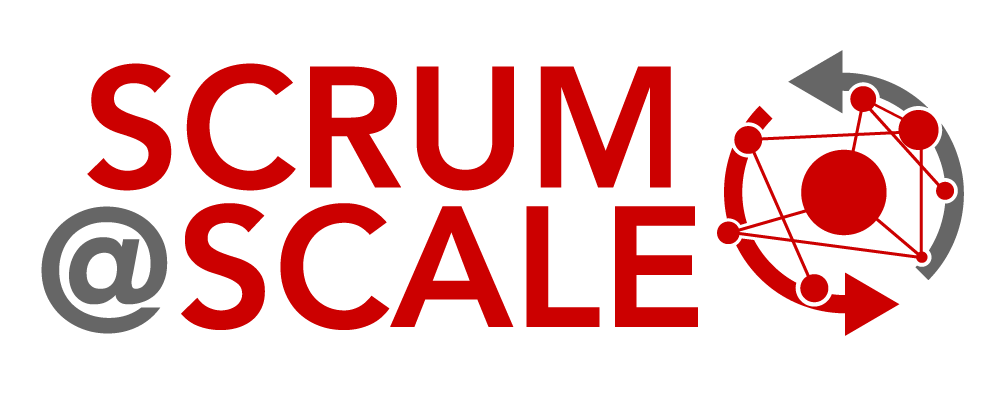Case Study
Nationwide Insurance: Scrum@Scale Transformation
Learn how Registered Scrum@Scale Trainer™ Luiz “Q” Quintela helped transform Nationwide, one of the United State’s largest insurance and financial services companies implement key components of the Scrum@Scale framework.
CASE STUDY SNAPSHOT
Trainer Name: Luiz “Q” Quintela
Organization: Nationwide Insurance
Industry: Healthcare, Insurance, and Emergency Services
Topic: Reference Model
Organization Size: Large
Date: 2019
Website: https://agileeducation.org/trainer/luiz–q–quintela/
Summary
Nationwide’s Goal: Increase Time to Market and Improve their Competitive Advantage
Nationwide Insurance is one of the largest insurance and financial services companies in the world. Headquartered in Columbus, Ohio, this Fortune 100 company faced one major challenge: time to market. In comparison to key competitors, Nationwide’s digital organization struggled to deliver on time, to reduce waste, and maintain their prominent market share.
In this case study Luiz Quintela, aka “Q”, and his team tackled this Agile implementation in two parts: first by introducing and adopting Scrum and second by scaling Scrum. Using the tried-and-tested Scrum framework, co-created by Dr. Jeff Sutherland, and key components of the Scrum@Scale framework, Q and Nationwide were able to increase delivery, reduce excess, and improve the quality of work.
Phase One: Adopt Scrum
In the first phase, Scrum adoption, Q and his team created Communities of Practice (CoPs) that would be a critical component in their long-term sustainability. In Agile transformations, it is common for Communities of Practice to emerge as they help facilitate knowledge-sharing quality standards across teams.
“A community of practice (CoP) is, according to cognitive anthropologists Jean Lave and Etienne Wenger, a group of people who share a craft and/or a profession. The group can evolve naturally because of the members’ common interest in a particular domain or area, or it can be created specifically with the goal of gaining knowledge related to their field.” – Source
In a Scrum environment, it is common for a Scrum team to be comprised of team members with various backgrounds and disciplines. A community of practice is a great technique to enable collaboration across multiple Scrum teams and bring together those in a Scrum implementation with common interests and roles. At Nationwide, Q introduced communities of practice for Coaches, Scrum Masters, and Product Owners; this enabled cross-team communication, a sense of community, and more.
Part 2: Scale Scrum and Introduce Key Components of Scrum@Scale
In the first phase, Q launched five Scrum teams. Eventually, that scaled to 36 teams. Today, Nationwide has over 250 Scrum teams. This scaling approach is detailed in the Scrum@Scale Guide, published by Dr. Jeff Sutherland and Scrum Inc., as the key to installing an Agile operating system. When “Getting Started” with an Agile implementation, the Scrum@Scale Guide recommends creating a reference model, like Q and Nationwide did:
“When implementing networks of teams, it is critical to develop a scalable Reference Model prior to scaling. The reference model is a small set of teams that coordinate to deliver every Sprint. As these teams successfully implement Scrum, the rest of the organization has a functioning, healthy example of Scrum to replicate. It serves as a prototype for scaling Scrum across the next network of teams. Any deficiencies in a Scrum implementation will be magnified when multiple teams are deployed.” – Read More
Starting with just five teams at Nationwide enabled the organization to identify key challenges that would likely emerge at a larger scale and helped to support a healthy, scalable Scrum ecosystem. It also enabled the introduction of the organization’s Scrum of Scrums. These components combined created a minimum viable bureaucracy (MVB), allowing Nationwide to focus multiple networks of Scrum Teams on prioritized goals. Ultimately, the organization’s mindset shifted: Nationwide moved from a “project organization” to a “product organization”. Teams were healthy, stable, and maximizing efficiency.
Outcomes from Implementing Scrum@Scale at Nationwide Insurance
- Nationwide changed its mindset – it moved from a “project organization” to a “product organization”
- Business-side velocity to start development improved by 64%; for example, a mobile application went from requirements to delivery within 22 days
- Nationwide experienced an overall 16% expense reduction; the organization was able to go from concept to cash within just 120 days
- In the first 30 days of use, 96% of deployments no longer had “high” or “critical” bugs
- First Run Pass Rate improved to over 90%, with 25% less headcount on Scrum teams
Who Is Luiz “Q” Quintela
Q adopted Scrum in early 2006 and was personally trained by Dr. Jeff Sutherland, the creator of Scrum and the inventor of Scrum@Scale. He is the co-author of the first Scrum@Scale book, Scaling Done Right and an international speaker on Agile and Software Engineering. Q’s experience is vast – he has implemented Scrum and enabled business agility in multiple industries, including: healthcare, financial services, banking, insurance, oil and gas, chemicals, government and, energy. Prior to finding his passion in business consulting and coaching, Luiz was a developer, systems architect, Scrum Master, Product Owner, Agile Coach, and Advisor. Q’s focus is to deliver cost-effective and innovative solutions to some of the most complex, costly business problems.
More Case Studies
Remote Startup Success: From Firefighting to Results
Agile Education Case Study Remote Startup Success: From Firefighting to Results This case study focuses on a remote startup that faced challenges with disorganized workflows, team burnout, and a lack of a clear product vision. The startup had no Product Owner, leading...
Improve Predictability and Performance: Using Aggregated Velocity Data in Scrum@Scale
Agile Education Case Study Improve Prioritization and Performance: Using Aggregated Velocity Data in Scrum@Scale This case study explores how aggregated velocity data was used to improve the performance, prioritization, and predictability of engineering teams in a...



